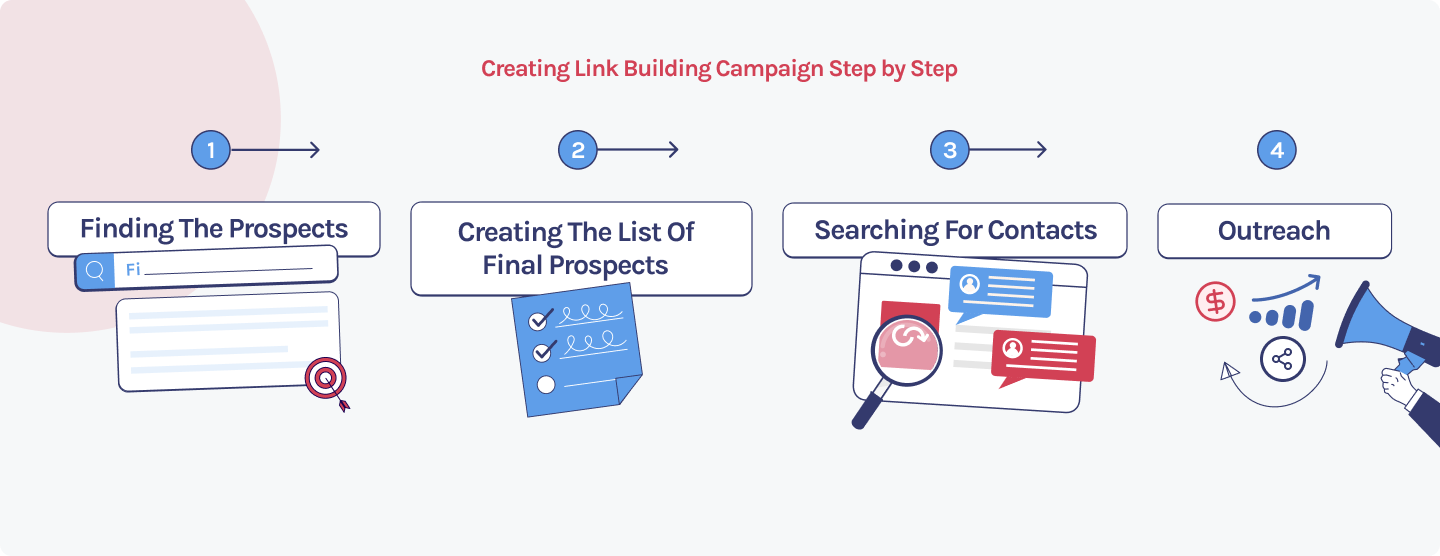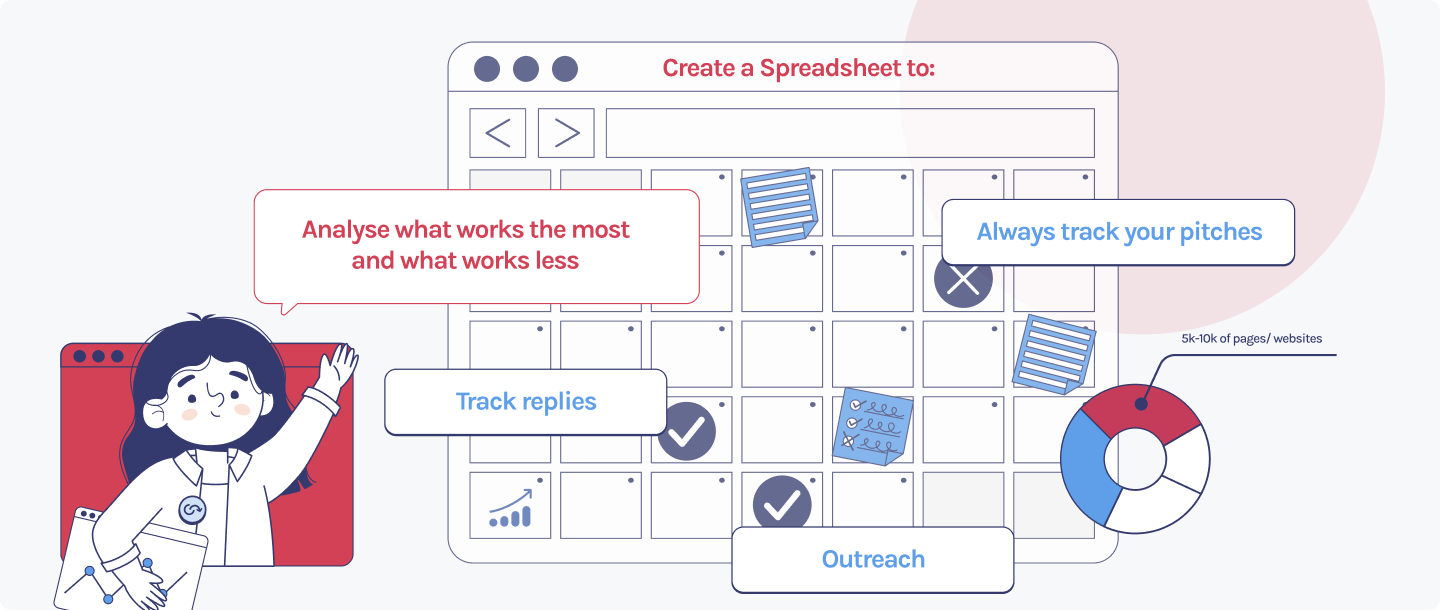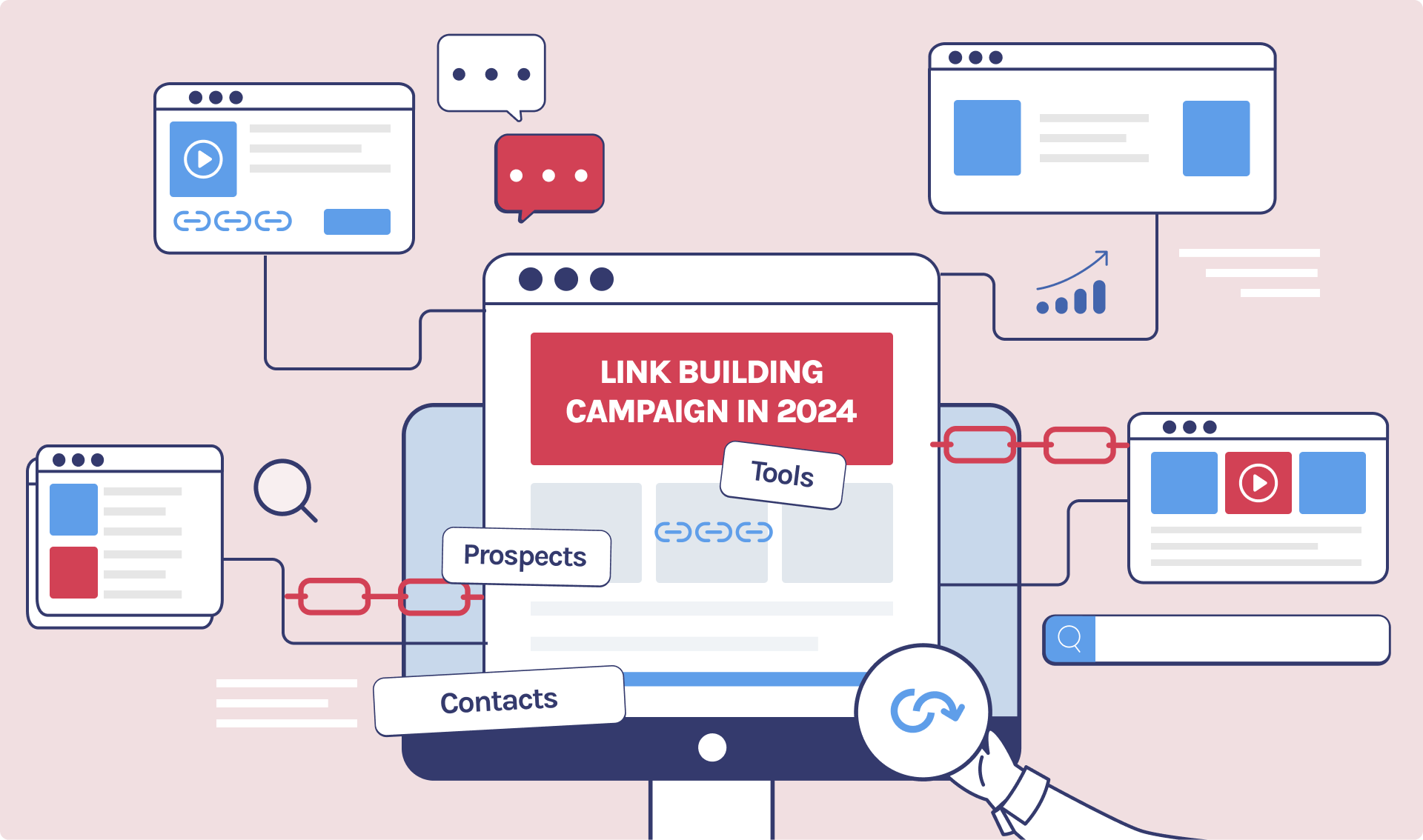This guide will be a good starting point for those who wants to build links by themselves or just evaluate do they need professional services. Also, it will be useful for beginners in SEO sphere.
So, why it is crucial to plan a proper link building campaign? Firstly, it’s all about time and resources. Link building often is time-consuming, and also it requires some money investments. Just to avoid wasting your time and finances – check this guide to the end and decide on the strategy you need.
Secondly, high quality links are a gold in SEO. They will boost your rankings and bring potential clients, readers or whatever you want.
Creating Link Building Campaign
Tools For A Link Building Campaign
Let’s start from the basics. What do you need to create and proceed with the link building campaign?
- Tool to find plenty of websites (potential link donors). Sure, you can use just Google itself, but it will consume too much time. I am using Ahrefs Content Explorer to find potential link placements. It’s easy to filter out websites by multiple filters and what is the biggest plus – you can easily export batch of websites from there.
- Tool to find contacts. Snov.io, Mailfeller, Hunter.io and many others – tools that you can use to find contacts in batches from the list of domains you’ve extracted before. Also, this part can be done without any tools, just finding email on the website. I will show everything in this article later on.
- Tool to send emails. Yes, you can just send it one by one, or also, you can use built in sender in hunter.io or snov.io. However, for me, the best working scheme is to use tool to avoid Gmail servers (they got a lot of restrictions like the limits of emails per day + you can easily be banned here). For example, SendGrid SMTP server is a great one that I am using for years now. 2nd part here is a tool that is sending batch of emails easily. For me, ideal is Gmass plugin for Gmail. It’s $25 per month for one user, but it’s worth of it. So, this combo of SendGrid + Gmass is a great option.
- Paid email accounts. It’s a great practice to use premium Gmail emails with your domain name. You need to ensure your emails are trustable enough. Sure, you can use your personal email, but there are some restrictions to the number of emails per day etc. Plus, with recent updates from Google side – you need to be sure you are not violating all the requirements regarding emails. It’s easier to execute these requirements using.
To be fair, this list should be bigger. But, I will not open all the secrets and I don’t want to scare you. So, this is a minimum you will need for a successful link building campaign.

Finding The Prospects
As I said before – you need to be able to find multiple prospects at once. A tool like Ahrefs Content Explorer is ideal for me. Imagine that I need to build links relevant for business niche. So, I will input some business related queries into the CE. After I get some results (thousands of pages) – I will start to filter them out.
Filters I am usually using for this purpose:
- One page per domain (don’t want to get duplicate domains in my list);
- Language filter;
- Filter explicit results;
- Publication date filter – if you need only fresh pages;
- DR filter;
- Website traffic filter;
- Word count – if I want to find only blog post pages, I will input 500+ words;
- Exclude home pages – just to avoid home pages, because I want blog posts.

So, the query you’ve used for a search should find a lot of relevant websites. But there are too many of them – you need to cut a big part of them. Filters described above will help you with that. Now, you have 5k-10k of pages/ websites there. You need to export them by using “export” button. However, there are limits for a single extraction, so you need to be creative to download everything you need.
Creating The List Of Final Prospects
You have 5k-10k of websites extracted. However, they are URLs for now. You need to trim them to domain levels (in case if you are not aiming for a specific URL to place a link).
Scrapebox is a great tool to do this (trim to domain level), or you can use Excel formula. It’s up to you, there are other tools on the internet for this case.

Okay, now you have the list of websites. However, this is not what you want. You want to have the list of websites, but highly relevant. Also, you want them to be online and not broken or suspended. For this sake, you need to check them.
This is a tricky part. The ideal option is to check them manually. You can find out if there are too many ads there, maybe they are not relevant etc. But, it is very time-consuming. You will spend weeks to check 10k of the websites. So, you need to optimize this process. You can search for crawlers on the internet, or you can hire a developer that will create such a crawler for your purposes.
How it even should work? Checking for relevancy is not that hard. You just need a crawler that will be able to check some places on the website itself, like titles or meta descriptions. Imagine you’ve checked 5 different places for a broad query which is related to your niche. Sites that have 4 or 5 of them on place – probably are highly relevant. Less than 2 – not worth to spend time.
This part is really tricky. You need to be either creative or patient here.
Searching For Contacts
This part is crucial for success. And it’s complicated enough.
Let’s start from the fact that not all the websites have contacts. What to do with these? You can try to find a contact form at least. You can go to the social media profiles, like LinkedIn or Facebook, and start searching for the right contact there (about right contacts – later on).
But most of the websites got “contact us” page, or “advertise” page etc. There you can find contact.
However, this way is manual. Meaning, you need to open websites one by one, click on different pages and search. Imagine if you have 1000 websites in your list. Sounds like a pretty boring thing to do. But, I will not suggest you to avoid this method at all. It’s a question of priorities – time or quality.
Another way to find contacts – in batches, using tools like MailFeller, Snov.io, Hunter.io and plenty of others. Drawbacks of this are that not all contacts can be found with these tools, often they are giving false contacts (not existing, not relevant etc.) and they are pretty expensive. But they are saving time. Also, there are some filters that you can adjust before starting a search. You can aim at marketing department emails only etc.
For me, – mix of these 2 methods is ideal. But as I said – I will not open all the secrets, and you need to be creative.
Outreach
This part is a decider. Whether your campaign will be successful or not.
Firstly, make sure your pitch is great. There are plenty of examples on internet and LinkedIn influencers who are explaining this part 1000 times a day for their audience. The best part about this – you can try different options and see what will work for you.
The greatness of the pitch lies in the very wide range. For example, if you want to place a link in 1 exact page (URL) you can find an author contact, and you need to pitch using his / her name, already explaining why this link is a good investment and what they will get, or their audience will get. This is a longer way to do outreach, but it’s less spammy.
The other way is to create the same pitch for each contact. You will save time, but it will look like a spam, unless you will create a masterpiece.
For outreach, you need to use a batch email sender like Gmass that I’ve mentioned before (SendGrid as an SMTP server). Also, these senders are built inside different email searchers (snov.io, hunter.io).
Additionally, kinda ideal but very expensive tool for outreach and managing link building campaigns is Pitchbox. Ideal option for those who like when everything is in one place.
SEO Power Suite Link Assistant is another option you can use to connect email and send it.
But for me, Gmass + SendGrid is the best option among those that I’ve tried.
As it was mentioned before – great to have paid email accounts and avoid violation of requirements. Check them out here.

What To Do Next?
Now you are waiting for the replies. However, it will not be a big number. You need to follow up and check your inbox, negotiate and build connections. Just asking for links is not working. You need to bring value to the table.
Create a Spreadsheet to track replies, always track your pitches and what works the most and what works less. Outreach is a question of time and experience.
For business owners who want to built links by themselves: if you have a big connection list (website owners etc.) who can link back – great. If you are a guest author for some great sources of info, and you can link to your website – great (If it’s the case – probably you don’t need to read this article, you should know everything).
But, if nothing of these is true – better buy link building services. You can buy it using some reputable agency or hire a freelance link builder like myself. It’s worth to spend some money on this, because you will save yourself a lot of time.

Final Words
This article opens up a little bit of info about link building process. As I said – not everything explained here, but a big part is broadly described. Tools, prospects, contacts and right approach to the outreach is enough to understand how complicated the process is.
If you are a business owner – hire a link builder or SEO agency, it’s the best way. If you are a SEO beginner – this is just a tip of an iceberg.
Do you have any questions?
